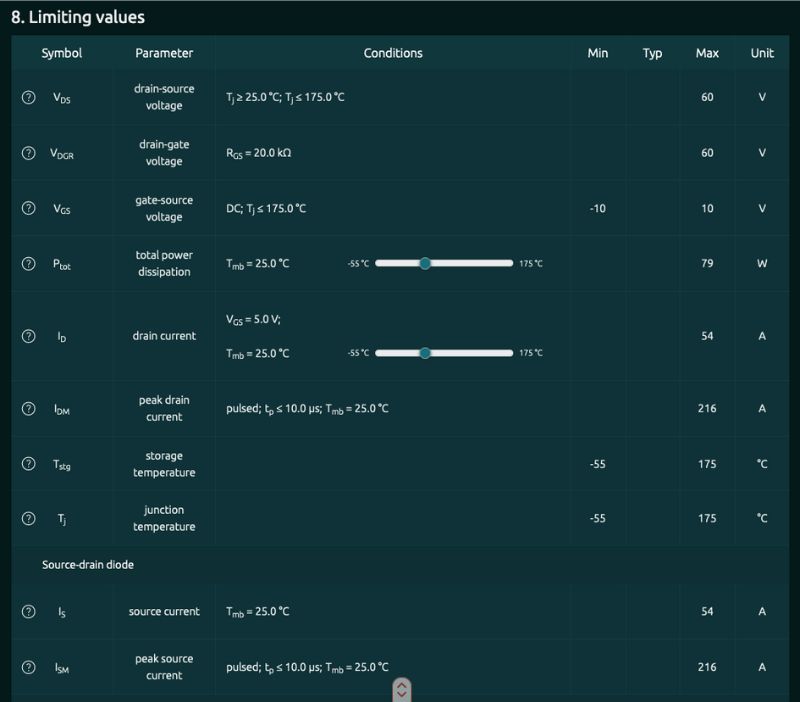Nexperia Adds Interactive Datasheets for MOSFET Selection
Nexperia updates its MOSFET offerings with new datasheets allowing engineers to see devices respond to different voltages, temperatures, and other parameters.
Dutch semiconductor manufacturer Nexperia recently introduced a new interactive component-selection resource paired with its metal-oxide-semiconductor field-effect transistors (MOSFETs). With the company’s new web-based datasheets, design and component engineers can move the interactive sliders to adjust the voltage, current, temperatures, and other parameters for their circuit application. The datasheet then shows how the device would respond to those inputs in real-time.
Nexperia headquarters in the Dutch city of Nijmegen. Image used courtesy of Nexperia
This compares to a more time-consuming status quo, requiring manual calculations or circuit simulators supplied by the device manufacturer. The latter process often yields limited results since some simulation models don’t show how temperature changes affect device behavior.
Nexperia rolled out the new offering with over 200 interactive datasheets covering its latest power MOSFET products for automotive and industrial applications. The company plans to make the datasheets accessible across all its discrete MOSFETs and other devices.
Interactive datasheet with quick reference data that can be used to evaluate Nexperia’s BUK9M12-60E N-channel logic-level MOSFET for automotive systems. Image used courtesy of Nexperia
Datasheets Offer Fresh Set of Component-Selection Functions
The new datasheets run on a web browser, so users don’t need to install additional device simulation software. Nexperia applied for a patent for the initial version and will seek customer feedback on enhancing its capabilities.
The offering complements the standard static datasheets in the company’s popular precision electrothermal MOSFET models by demonstrating how discrete MOSFETs change with temperature.
Limiting values can be adjusted in the datasheet with Nexperia’s BUK9M12-60E N-channel logic-level MOSFETs. Image used courtesy of Nexperia
Now, engineers can visualize how their circuit interacts with gate voltage, drain current, RDS(on), and temperature adjustments via tables and graphs.
Nexperia’s Revenue Growth and Expanding MOSFET Portfolio
Nexperia primarily markets discrete components and power and logic integrated circuits (ICs), shipping over 10 billion products annually. Now a subsidiary of China-based Wingtech Technology, it previously operated as the standard products division of Dutch chip giant NXP Semiconductors. Its 2018 acquisition by Wingtech allowed the company to expand its portfolio and add new capacity to meet growing market demand.
The company revealed earlier this month that its revenue grew by 10.7% in 2022 to $2.36 billion, with a 12% increase in product sales. That growth trajectory marks a slowdown from 2021, when its revenue rose 49% to $2.14 billion. Still, its latest figures reflect broader demand in electrification and digitalization, serving Nexperia’s core power discrete business.
Nexperia is investing heavily in boosting its production capacity at its wafer fabs in Europe and test/assembly facilities in Asia. This comes after the company opened its first North American research and development facility last year; the new design center in Dallas, Texas, will focus on analog signal conversion and power management ICs.
Meanwhile, it’s expanding its MOSFET portfolio for automotive, computing, and industrial customers. Nexperia released its first application-specific MOSFETs in March for hot-swap and soft-start telecom and computing equipment applications. And last year, it added three new 30V N-channel small-signal trench MOSFETs that improve battery performance and thermal management in space-limited applications such as smartphones, wearables, and hearing aids.
Nexperia also released a range of 20 V and 30 V MOSFETs in what the company claims is the world’s smallest DFN package. This marked an expansion of its ESD protection devices to its MOSFET portfolio—meeting the demand for wearables and hearing devices requiring accommodation for new artificial intelligence and machine learning capabilities.









